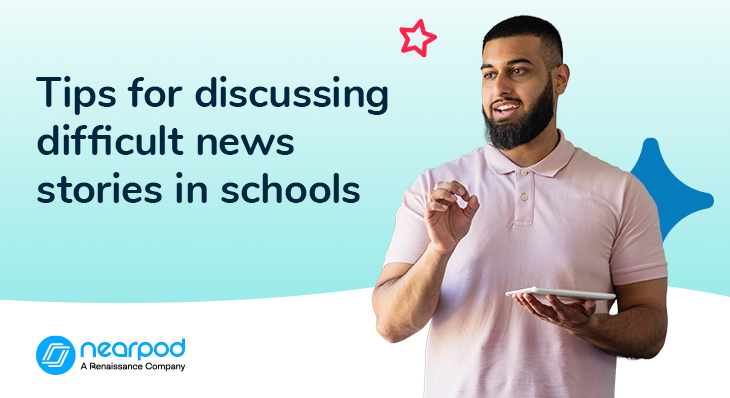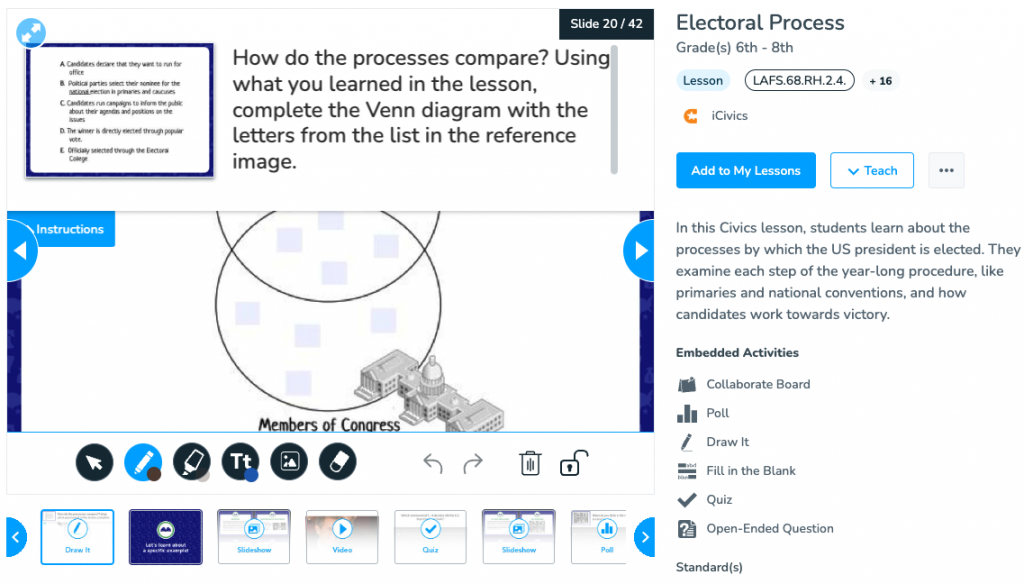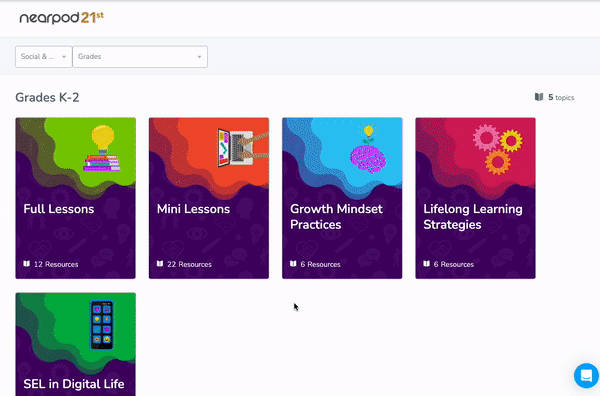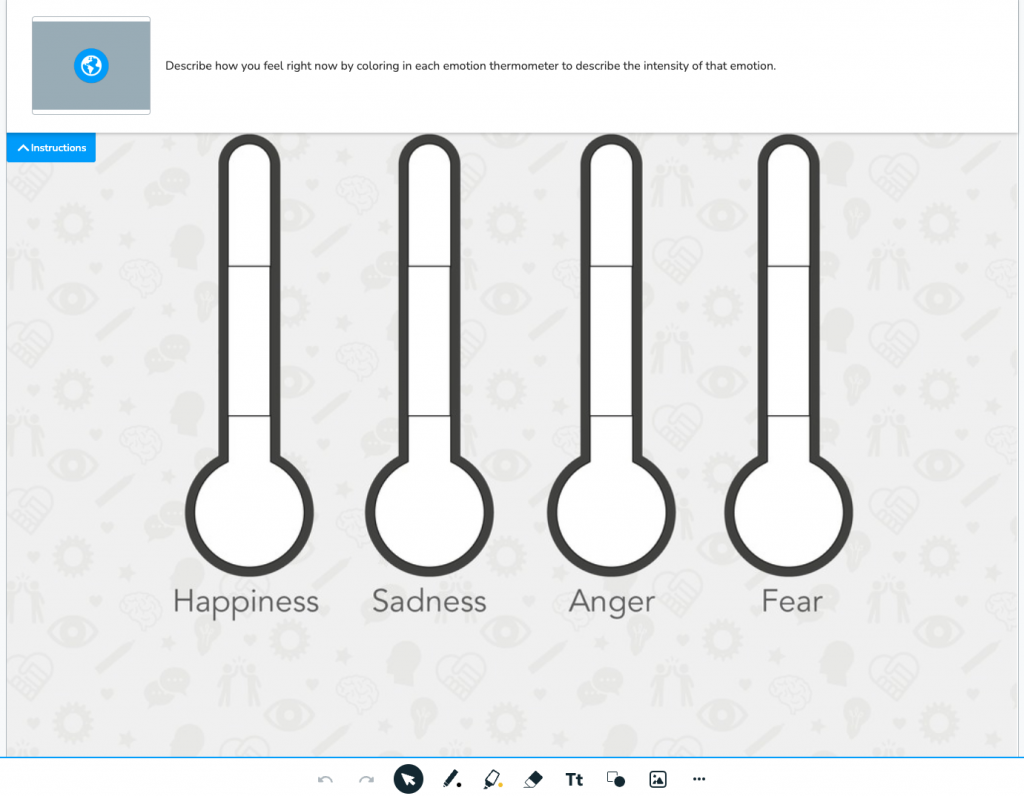
How to teach current events and discuss difficult news stories
Today’s students are increasingly connected to the world around them. The American Academy of Child and Adolescent Psychiatry reports that, on average, children ages 8-12 spend between four and six hours a day watching or using screens. For teens, the number jumps to up to nine hours a day.
While safeguards can be put in place to protect kids from graphic content online, what happens when this kind of content occurs in real life and ends up on the news? When current events in the world include violence, bigotry, or other complex topics? While using current events in the classroom makes it relatively easy to build real-world connections between academic work and students, how do you handle difficult or tragic stories as an educator?
How can we protect kids in today’s media landscape?
Kids are more digitally connected than ever, which makes protecting what they see and hear in the media a challenge. There are some governmental protections, such as the Federal Communications Commission’s policies for broadcasters, designed to protect the public from certain topics, including:
- Indecency
- Obscenity
- Sponsorship identification
- Conduct of on-air contests
- Hoaxes
- Commercial content in children’s TV programming
- Broadcast news distortion
- Accessibility to emergency information on television
- Inappropriate use of Emergency Alert System warning tones for entertainment or other non-emergency purposes
However, this does not protect children from what they might see on other platforms, such as streaming, social media, or the web. Social studies teachers, educators in general, and parents can put rules in place and try to limit exposure—but you can’t be everywhere at once.
This is why teaching kids how to process, analyze, and understand difficult news stories and other types of content is so important.
How to discuss difficult news stories with students
Regardless of age, kids hear and understand much more than you might think. Coverage of racism, violence, heated political differences, mass shootings, natural disasters, and the pandemic can take a toll on their mental and emotional well-being. When they’re young, children don’t have the necessary news and media literacy skills to fully comprehend what’s happening. While they may better understand certain events as they get older, they can still struggle to distinguish fact from opinion or identify misinformation.
Regardless of age, difficult news stories can be tough to process and affect our emotions. Having a safe space to talk about these stories and feelings can help. Use these tips as a guide:
- Listen. Give your students the space to ask questions, share their thoughts, and process their emotions. Encourage patience and mindfulness of misinformation. By actively listening to them and asking questions of your own, you can demonstrate how to approach complex issues with thought and care.
- Pause. Be cognizant of your own opinions, biases, and behavior. Students will look to you as their teacher to guide their reactions. By staying calm and composed, you’ll encourage your students to respond similarly.
- Take positive action. Feelings of helplessness after tragic events are not uncommon; empower your students to think about what they can do. Depending on their age and the issue, encourage them to consider what steps they can take to create change and support their community.
- Consider your students’ backgrounds. Different kids with different family backgrounds, cultures, situations, and life experiences may react differently to events. Be cognizant of this so that your conversations stay inclusive and safe for everyone in the classroom.
- Plan ahead. Unfortunately, it’s not a matter of if these kinds of events will happen but when. Be proactive and build a classroom (and school) community based on supportive and respectful conversation.
The case for digital citizenship
So, what can you do to help your students? Develop their media literacy and digital citizenship skills so that they know how to read and analyze content and practice healthy digital habits. Build their curiosity and sleuthing skills to help them find the whole story, learn about multiple perspectives, and understand the larger context of sophisticated topics such as wars, protests, or tragic events. Teach them the difference between fact, opinion, misinformation, and disinformation. And safeguard their emotional well-being by helping them unpack their feelings about complex topics and events.
Nearpod partners with Common Sense Education to equip students with the 21st-century skills they need to be successful in today’s digital world, including digital citizenship.
New to Nearpod? Make sure you’re signed up to access these lessons and activities!
Teachers can sign up for free below to access and create interactive lessons. Administrators can schedule a call with an expert to explore Nearpod’s 21st Century Readiness Program and unlock the full power of Nearpod for schools and districts.
How to teach current events and discuss difficult news stories in schools
1. Teach the fundamentals of media literacy
Media literacy is a core pillar of digital citizenship and an essential skill for both students and adults.
Developing kids’ communication and critical thinking skills can make them informed consumers and thoughtful creators. As students read or watch online content, they should learn to ask themselves five foundational questions:
- Who created this message?
- What creative techniques are used to attract my attention?
- How might different people understand this message differently from me?
- What lifestyles, values, and points of view are represented in or omitted from this message?
- Why is this message being sent?
Nearpod’s 21st Century Readiness Program explores media literacy, among other essential digital skills, with turnkey lessons—each one designed in a way that challenges and invites students to reflect on their own digital habits and build healthy habits of mind. Some lessons include:
- What Is a News Story? (K-2): Students explore the role of a journalist, how to tell the difference between a news story and other types of stories, and how to tell or write their own news articles.
- Evaluating Evidence (3-5): Students learn about observation, inference, and assessing the credibility of evidence from news sources.
- Diversifying Your Media Diet (9-12): Students learn how the media they consume affects their understanding of events and use case studies to reflect on the consequences of a narrow media diet.
These lessons are only available to users with access to Nearpod’s 21st Century Readiness Program.
2. Teach media literacy alongside current events
When you incorporate teaching current events into your lesson plans, you help engage students by making concrete connections to the real world, their communities, and their daily lives. Put their newfound media literacy skills to the test by discussing current events in the classroom.
Nearpod’s Current Events lesson library produces new lessons every two weeks throughout the school year. These lessons offer balanced, factual perspectives, helping students build their media literacy skills. In each lesson, students learn background information and are asked to critically analyze different components through interactive activities and dig deeper into the topic by exploring real-world connections. This curated content helps students of various reading levels understand the world around them and equips them with essential skills like evaluating sources, understanding bias, and forming educated opinions. Here are some examples of Nearpod’s past Current Events lessons:
- Teens and Social Media (6-12): Students learn how social media affects teenagers, analyze statistics about social media use, and examine their relationship with it.
- Influencer Culture: Facts & Impact (6-12): Students learn about social media influencers, their impact on society, their social responsibility, and the pressures they face to maintain authenticity online.
- Proposed TikTok Ban (6-12): Students learn about the security concerns surrounding TikTok and the proposed bill that would ban the app in the U.S. (sensitive content).
- AI in Schools (6-12): Students learn about generative artificial intelligence (AI) in education, how some schools have embraced it, and the ethical concerns of using AI in the classroom.
3. Navigating politics in the classroom
But how do you handle hot-button topics like politics? Much of the discourse in politics can be divisive and counterproductive in a classroom environment. At the same time, it’s hard to avoid, as ensuring your students understand how the government works and the importance of voting in a democracy will help them be informed and contributing members of society.
Nearpod offers nonpartisan lessons across grade levels about voting, the election process, political parties, and the U.S. government. Empower students with lessons like these:
- Changes in the 2024 Presidential Election (6-12): In this Current Events lesson, students learn about President Biden’s withdrawal from the 2024 presidential race and reflect on the use of negative campaigning in this election.
- Executive Orders (9-12): In this Current Events lesson, students will learn about executive orders and how they differ from other ways laws are made in our government. They will also research recent executive orders.
- Political Parties (6-8): Students learn how political parties began in the U.S. and the differences between Republicans and Democrats.
- Identifying Bias When Evaluating Candidates (9-12): Students learn to use their active and critical listening skills during a presidential debate to improve their ability to make informed judgments of candidates and their policies.
- Electoral Process (6-8): Students learn how the U.S. president is elected, including the primaries, national conventions, and campaigning.
4. Empower students with social and emotional skills
It’s not all about digital skills—developing strong offline attributes can translate into better online decisions. Social and emotional learning (SEL) helps students develop the appropriate capabilities to support healthy relationships and development. SEL can include self-awareness, self-management, social awareness, relationship skills, and responsible decision-making.
Nearpod champions SEL by offering interactive SEL lessons for grades K-12. From student check-ins to complete lesson, you can find CASEL-aligned interactive lessons that tie into core curriculum standards. Use these resources to incorporate SEL in your classroom:
- Mini Lessons (K-5): Use these check-ins and resources to introduce SEL into your curriculum.
- Growth Mindset Practices (K-12): Use these resources and activities to promote question-asking, metacognition, persistence, flexible thinking, and responsible risk-taking.
- SEL in Digital Life (K-12): Use these lessons to have students reflect on and discuss SEL skills as they relate to their digital lives.
5. Support their emotional health
Whether dealing with feelings about complicated current events or other external burdens, such as family responsibilities or digital drama, it’s important to make space for kids’ emotions.
Try using different lessons and tools, such as a morning classroom Poll activity, to gauge students’ moods and readiness to learn (and assess who may need some extra support that day). Try lessons like these to normalize conversations around emotions and share relaxation and mindfulness techniques:
- Emotion Thermometer (K-5): This SEL lesson from the 21st Century Readiness Program works on self-awareness, recognizing and describing the intensity of emotions, and understanding and expressing feelings.
- Open Up: What Gives You Hope? (2-12): This lesson from the 21st Century Readiness Program for elementary, middle school, and high school students works on self-awareness and identifying emotions.
- Managing Worry (K-3): This Flocabulary lesson works on strategies for managing worry and anxiety, including deep breathing, thinking positively, and reaching out to trusted adults and friends.
6. Make your classroom a welcoming one
Did you know that the average fourth grader spends around 997.8 hours in school per school year? For 11th graders, the number jumps to 1,034.8 hours per year. In other words, students spend a lot of time in school—and, by extension, with their educators. Never underestimate your influence and impact on a student’s life.
Remember that a positive classroom culture can impact the environment of the entire school. Consider these essential steps to building a positive school culture when thinking about your classroom:
- Build relationships
- Model positive behavior
- Set goals that elevate school expectations
- Share your school’s vision
- Appreciate people
Let your students know you’re there for them by building an inclusive and welcoming classroom community. Give them a place to ask difficult questions and have meaningful conversations. Try using these icebreaker activities and culture-building lessons to develop a positive classroom culture over time:
Start using Nearpod in your classroom
Equipping your students with the skills and learning experience they need to navigate the online world safely and wisely is essential. Integrate media literacy and digital citizenship skills into your curriculum so that when students inevitably encounter difficult or disturbing news stories and online content, they have the skills they need to handle them.
New to Nearpod? Make sure you’re signed up to access these lessons and activities!
Teachers can sign up for free below to access and create interactive lessons. Administrators can schedule a call with an expert to explore Nearpod’s 21st Century Readiness Program and unlock the full power of Nearpod for schools and districts.
Click here to learn more about Nearpod’s 21st Century Readiness Curriculum Program!

Nearpod’s award-winning platform is used by thousands of schools around the globe, transforming classroom engagement.







